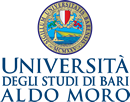L’apprendente di Lingue classiche è un utente plurilingue?
DOI:
https://doi.org/10.15162/1970-1861/1329Parole chiave:
Classical Languages, mother tongue, plurilingualism, translationAbstract
The focus of this paper is on classical languages methodology in light of two recent documents released by the Council of Europe. A Recommendation released in 2018 identifies eight key competences that are relevant towards a general rethinking and reshaping of traditional schooling and may promote a fresh approach to classical texts as well. In the CEFR Companion Volume, Mediation is a key concept: the change in terminology from the four skills to the four modes of activity recognizes the role of the social dimension in language learning and promotes the Action-oriented approach. The concept of the user/learner as a social agent mobilising his/her unique plurilingual repertoire represents a significant development from the communicative approach.
Language is not used just to transmit knowledge, but also to construct meanings. Thus, passing from one language to another necessarily involves passing from one culture to another. In these activities, the learner interprets a cultural phenomenon in relation to another culture, that involves his/her pluricultural repertoire. A process of linguistic mediation tries to facilitate understanding in a process of cultural mediation and translation. Teaching should shift from a traditional methodology to a new one that consists in rearranging contents according to new cultural paradigm, in order to broaden and deepen linguistic knowledge and awareness and improve translational abilities.
Riferimenti bibliografici
Balbo A., 2007, Insegnare latino. Sentieri di ricerca per una didattica ragionevole, Torino, UTET.
Balboni P. E., 2018, Fare educazione linguistica. Insegnare italiano, lingue straniere e classiche, Torino, UTET.
Balboni P. E., Caon F., 2014, “A performance-oriented model of intercultural communicative competence”, in Journal of Intercultural Communication, ISSN 1404-1634, Issue 35, July 2014 (ultimo accesso 15-10-2021).
Balboni P. E., 1999, Dizionario di Glottodidattica, Perugia, Guerra.
Celic C., Seltzer K., 2013, Translanguaging: A CUNY NYSIEB Guide for educators, New York, CUNY NYSIEB The Graduate Center.
Council of Europe, 2001, Common European Framework of Reference for Languages: Learning, Teaching, Assessment http://www.coe.int/lang-CEFR (ultimo accesso 15-10-2021).
Consiglio d’Europa, 2020, Quadro comune europeo di riferimento per le lingue: apprendimento, insegnamento, valutazione, Volume complementare http://www.italianolinguadue.unimi.it (ultimo accesso 15-10-2021).
Raccomandazione Consiglio Europeo del 22-5-2018 relativa alle competenze chiave per l’apprendimento permanente https://eur-lex.europa.eu/legal-content/IT/TXT/?uri=CELEX%3A32018H0604%2801%29 (ultimo accesso 15-10-2021).
Raccomandazione Parlamento Europeo e Consiglio del 18-12-2006 relativa a competenze chiave per l’apprendimento permanente https://eur-lex.europa.eu (ultimo accesso 15-10-2021).
Cummins J., 1999, “BICS and CALP: clarifying the distinction”, University of Toronto https://eric.ed.gov/?id=ED438551 (ultimo accesso 15-10-2021).
Cummins J., 1981, Bilingualism and Minority Language Children. Language and Literacy Series, Toronto, ON, The Ontario Institute for Studies in Education.
Cummins J., 1979, “Cognitive/Academic Language Proficiency, Linguistic Interdependence, the Optimum Age Question and Some Other Matters”, in Working Papers on Bilingualism, 19
Daloiso M., 2009, I fondamenti neuropsicologici dell’educazione linguistica, Venezia, Cafoscarina.
Grosjean F., 1989, “Neurolinguists, Beware! The Bilingual Is Not Two Monolinguals in One Person”, in Brain and Language, 36, pp. 3-15.
Leondini S., 2020, “Ten arguments for doing CLIL right now. Perché un curricolo verticale CLIL di Lingue classiche”, in Scuola e Lingue Moderne, 6-7, LVIII, pp. 32-37.
MIUR 2019, Gli alunni con cittadinanza non italiana http://www.miur.gov.it/documents (ultimo accesso 15-10-2021).
North B., 2020, “The CEFR renewed: Inspiring the future of Language education”, in Italiano Linguadue, 1, pp. 549-560.
Perrone-Bertolotti M., Rapinf L., Lachaux J.-P., Baciu M., Lœvenbruck H., 2014, “What is that little voice inside my head? Inner speech phenomenology, its role in cognitive performance, and its relation to self-monitoring”, in Behavioural Brain Research, 261, pp. 220-239.
Piccardo E., North B., Goodier T., 2019, “Broadening the Scope of Language Education: Mediation, Plurilingualism, and Collaborative Learning: the CEFR Companion Volume”, in Journal of e-Learning and Knowledge Society, v.15, n.1, pp.17-36 https://doi.org/10.20368/1971-8829/1612 (ultimo accesso 15-10-2021).
Piccardo E., 2020, “La mediazione al cuore dell’apprendimento linguistico per una didattica 3.0”, in Italiano Linguadue, 1, pp. 561-580.
Piccardo E., 2014, From Communicative to Action-Oriented: a research pathway, https://www.researchgate.net/publication/338177979_Piccardo_E2014From_Communicative_to_Action-oriented_a_Research_Pathways (ultimo accesso 15-10-2021).
Resnik P., 2021, “Multilinguals’ use of L1 and L2 inner speech”, in International Journal of Bilingual Education and Bilingualism, 24:1, pp. 72-9.
Ricucci M., 2013, “Ørberg per se e per alios illustratus: la dimensione teorico-descrittiva del metodo induttivo-contestuale”, in Letras Clàssicas, 17 (2), pp.31-51.
Rosenblatt L., 1988, Writing and reading: the transactional theory, Urbana (IL), The National Institute of Education.
Rosenblatt L., 1978, The Reader, the Text, the Poem, Carbondale (IL), Southern Illinois University Press.
Skutnabb-Kangas T., 1996, “Educational Language choice – multilingual diversity or monolingual reductionism?”, in Hellinger, Marlis, Ammon Ulrich (Eds.), Contrastive Sociolinguistics, Berlin-New York, Mouton de Gruyter, pp. 175-204.
Skutnabb-Kangas T., 1989, “Multilingualism and the education of Minority Children”, in Estudios Fronterizos, VII, VIII, 18-19, pp. 36-67.
Turnbull B., 2018, “Reframing foreign language learning as bilingual education: epistemological changes towards the emergent bilingual”, in International Journal of Bilingual Education and Bilingualism, 21:8, pp. 1041-1048.
Zubrzycki K., 2019, “Am I perfect enough to be a true bilingual? Monolingual bias in the lay perception and self-perception of bi- and multilinguals”, in IRAL, 57 (4), pp. 447-495.





